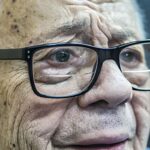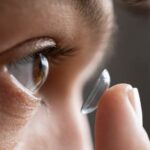Warning: This article contains a graphic picture of the patient
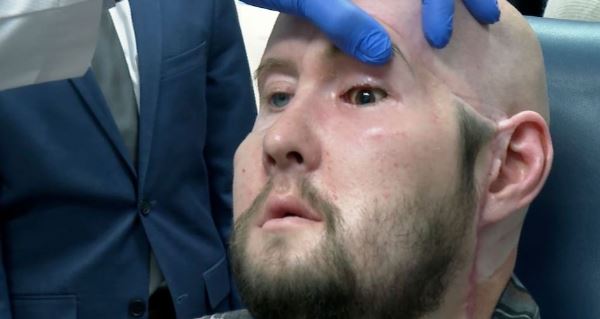
A surgical team at NYU Langone Health achieved a historic milestone by conducting the world’s first-ever whole-eye and partial-face transplant on a 46-year-old military veteran from Arkansas, who had survived a workplace high-voltage electrical accident. The procedure involved the transplantation of the complete left eye and a facial segment from a single donor, marking it as the first human whole eye transplant in medical history.
Although it is uncertain whether the patient could gain his full vision back or not after the whole-eye transplant, Aaron is still optimistic. Doctors “never expected it to work at all“, patient Aaron James said. Nevertheless, since the procedure in May 2023, the transplanted left eye has exhibited remarkable signs of health, including the establishment of direct blood flow to the retina—the part of the eye situated at the back that receives light and transmits images to the brain. Despite the numerous unanswered questions in this unprecedented case, this groundbreaking accomplishment creates new avenues for potential advancements in vision therapies and other relevant medical fields.
About the Accident
On May 27, a whole-eye surgical procedure that spanned approximately 21 hours took place, involving a team comprising over 140 surgeons, nurses, and various healthcare professionals. The operation was led by Dr. Eduardo D. Rodriguez, who serves as the director of the Face Transplant Program, the Helen L. Kimmel Professor in Reconstructive Plastic Surgery, and chairs the Hansjörg Wyss Department of Plastic Surgery at NYU Langone.
The recipient of this groundbreaking surgery was Aaron James, hailing from Hot Springs, Arkansas. James faced a life-threatening incident in June 2021 when he sustained a 7,200-volt electric shock while working as a high-voltage lineman. The accident occurred when his face accidentally came into contact with a live wire. Despite undergoing multiple reconstructive surgeries, James suffered extensive injuries, including the loss of his left eye, his dominant left arm from above the elbow, his entire nose and lips, front teeth, left cheek area, and chin down to the bone.
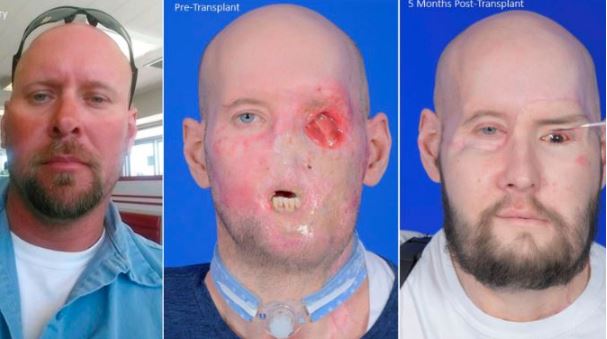
The procedure
The NYU Langone team got involved with James’ case two months after his injury, guiding early-phase reconstruction with specialists at a Texas medical centre. Over the next year, discussions about the potential for a face transplant were held. Following the removal of James’ left eye in Texas due to severe pain, Dr. Rodriguez and his team proposed preserving the optic nerve for future reconstructive options, including a potential transplant. This led to discussions about the unprecedented idea of including an eye into the face transplant. Despite recognizing the uncertainties, NYU Langone’s interdisciplinary team, Dr. Rodriguez, and the James family collectively decided to proceed with both a comprehensive eye and face transplant, anticipating potential cosmetic benefits.
“Given Aaron needed a face transplant and will be taking immunosuppressive drugs regardless, the risk versus reward ratio of transplanting the eye was very low,” said Dr. Rodriguez.
Initially, doctors were just planning to include the eyeball as part of the face transplant for cosmetic reasons, Dr Rodriguez said.
“If some form of vision restoration occurred, it would be wonderful, but the goal was for us to perform the technical operation,” said Dr Rodriquez

Under the guidance of Dr Rodriguez, this marks the fifth time a face transplant has been conducted and the first recorded instance it has been done together with a comprehensive whole-eye transplant. “The mere fact that we’ve accomplished the first successful whole-eye transplant with a face is a tremendous feat many have long thought was not possible,” added Dr. Rodriguez. “We’ve made one major step forward and have paved the way for the next chapter to restore vision.”
“Aaron has been extremely motivated to regain the function and independence he lost after his injury. We couldn’t have asked for a more perfect patient,” said Dr. Rodriguez. “We owe much of our success in this monumental endeavour to the exceptional institutional support we receive at NYU Langone and the unwavering dedication of our world-class team in delivering the highest level of care to our patients. This achievement demonstrates our capacity to embrace the most difficult challenges and drive continuous advancements in the field of transplantation and beyond.”
The Donor
In February 2023, Aaron James was officially listed as a potential recipient for a face and whole-eye transplant with the United Network for Organ Sharing (UNOS) after gaining approval from NYU Langone. The local organ procurement organization, LiveOnNY, led the search for a donor, and in May 2023, a suitable donor was identified in just three months. Dr. Vaidehi S. Dedania, a retina specialist at NYU Langone, conducted thorough evaluations to ensure the donor’s eye was healthy and viable. The entire process, from injury to transplant, took approximately two years.
“The donor hero was a young man in his 30s who came from a family that strongly supports organ donation. He, in support by his family, generously donated tissues leading to this successful face and eye transplant, but also saved three other individuals between the ages of 20 and 70, donating his kidneys, liver, and pancreas,” said Leonard Achan, RN, MA, ANP, president and CEO of LiveOnNY. “LiveOnNY is proud to have collaborated with such a distinctive team of medical professionals at NYU Langone. This act of grace and innovative surgical procedure will have a multigenerational impact on all the recipients and their loved ones.”
Concerns about the nerve
While corneal transplants are routine, achieving successful whole-eye transplants to restore vision has been challenging due to the intricate nature of the eye, involving complexities such as nerve regeneration, immune rejection, and retinal blood flow. The optic nerve, crucial for transmitting visual information to the brain, poses a significant hurdle in reestablishing nerve connections for vision restoration.

Dr Rodriguez, in collaboration with NYU Langone’s Transplantation and Cellular Therapy Center, part of the Blood and Marrow Transplant Program at Perlmutter Cancer Center, decided to address this challenge by combining the donor eye with donor bone marrow–derived adult stem cells. This innovative approach aims to leverage adult stem cells from bone marrow for replacement therapy, facilitating natural repair by generating healthy cells to replace damaged or dysfunctional components in the eye.
“This is the first attempt of injecting adult stem cells into a human optic nerve during a transplant in the hopes of enhancing nerve regeneration,” said Samer Al-Homsi, MD, MBA, executive director of the Transplantation and Cellular Therapy Center and professor in the Department of Medicine at NYU Langone. “We chose to use CD34-positive stem cells which have been shown to harbor the potential to replace damaged cells and neuroprotective properties.”
During the transplant, bone marrow that was harvested from the donor’s vertebrae and processed preoperatively to isolate the CD34-positive stem cells was brought into the operating room (OR) and injected at the optic nerve connection of the recipient.
“We have now demonstrated that the procedure is safe and potentially efficacious, but we need time to determine if this step plays a role in enhancing the chance of sight restoration and if there’s anything further that can be done in the future to optimize the procedure,” added Dr Al-Homsi.
The healing Process
Following the surgery, James spent just 17 days in the intensive care unit at NYU Langone, one of the briefest recoveries among Dr. Rodriguez’s face transplant recipients. He was discharged on July 6 to a nearby apartment and continued outpatient rehabilitation, including physical, occupational, and speech therapy.
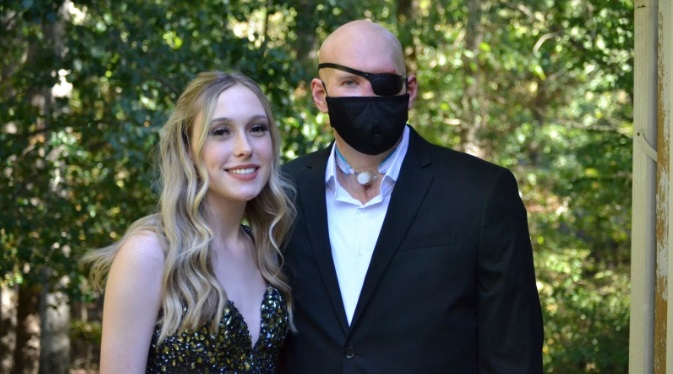
Maintaining a positive outlook, James is immensely grateful for reclaiming aspects of life lost after the 2021 injury, particularly the restoration of taste, smell, and the ability to eat solid foods. On September 14, he returned home to Arkansas with his wife, Meagan, and daughter, Allie. Despite monthly follow-up appointments in New York City, James is considering the option of returning to work as a safety manager for high-voltage line workers in the future.
“I’m grateful beyond words for the donor and his family, who have given me a second chance at life during their own time of great difficulty. I hope the family finds solace in knowing that part of the donor lives on with me,” said James. “I will also forever be thankful to Dr. Rodriguez and his team for changing my life. My family and I wouldn’t have been able to navigate this difficult journey without their expertise and support. We hope that my story can serve as inspiration for those facing severe facial and ocular injuries.”
Looking into the future

James’ vision in the right is intact but the transplanted left eye currently does not see. Nevertheless, in the past six months, the transplanted eye has demonstrated remarkable signs of health in other aspects, as assessed through various clinical tests measuring outcomes.
Dr. Rodriguez, along with Dr. Dedania and a multidisciplinary team comprising renowned researchers and clinicians in neurology, ophthalmology, radiology, and neuroradiology, consistently meets to address lingering questions regarding the eye and explore potential methods to gauge any indications of sight restoration.
Source: NYU Langone Health

